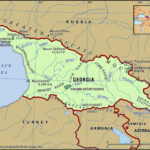For years, guitarists have strived to capture the elusive and awe-inspiring guitar tone of U2’s “Where the Streets Have No Name.” The Edge’s signature sound, characterized by shimmering delays and a spacious atmosphere, is instantly recognizable and deeply influential. Like many, I embarked on a quest to perfectly replicate this sound using my Kemper Profiler, navigating through countless rigs in Rig Manager without quite hitting the mark. Driven by a desire for sonic accuracy, I delved into research and experimentation, and I’m excited to share a rig that I believe truly nails that iconic “U2 Where The Streets Have No Name” tone.
You can find this meticulously crafted rig readily available on Rig Manager under the tag “U2 Streets.” Let’s break down the components and settings that make this rig sing.
Unpacking the “U2 Streets” Kemper Rig: A Deep Dive into The Edge’s Tone
My journey began by building upon a solid foundation: Ryan Baker’s “U2 Still Haven’t Found” rig from Rig Manager. This rig offered a promising starting point with its Vox AC30 amp profile (cab-less). Crucially, I activated the cabinet simulation, recognizing the vital role of speaker and cabinet characteristics in shaping the final sound.
Extensive research into The Edge’s gear and effects chain for “Where the Streets Have No Name” revealed several key elements that are essential for achieving authentic replication. Here’s a step-by-step breakdown of how this rig is constructed:
1. The Guitar Foundation: Stratocaster and Pickups
The bedrock of The Edge’s sound on “Streets” is his signature Fender Stratocaster. Specifically, the song utilizes the second position on the pickup selector, engaging the bridge and middle single-coil pickups in parallel. This pickup combination delivers a bright, articulate tone with a scooped midrange – perfect for cutting through the mix and interacting beautifully with delay effects. Using a Stratocaster with this pickup configuration is the first crucial step in your own sonic journey.
2. Compression: The Tone Sculptor
In The Edge’s signal chain, a compressor pedal is placed right at the beginning. Compression plays a vital role in evening out the dynamics of the guitar signal, increasing sustain, and adding a subtle punch and clarity. While the specific compressor model isn’t crucial for this Kemper rig recreation, ensure you incorporate a compressor in the “stomp” section of your Kemper, aiming for a setting that subtly tightens the signal without overly squashing the dynamics.
3. Slapback Delay: The Rhythmic Foundation
The next element in the chain is a slapback delay. This short delay creates a doubling effect, adding width and rhythmic complexity to the guitar signal. In the “U2 Streets” rig, a single delay module is employed to create this slapback. The key parameters are:
- Delay Time: 100 milliseconds (ms)
- Mix: 50%
This setting produces a distinct, yet subtle, slapback echo that forms the rhythmic backbone of the sound.
4. Dual Delay Magic: The Heart of the “Streets” Sound
The magic of “Where the Streets Have No Name” truly lies in its layered delay textures. The Edge famously utilizes multiple delay units, and to accurately recreate this, the “U2 Streets” rig employs the Kemper’s Dual Delay module. This allows for two independent delay engines to work in tandem, creating rich and intricate echoes.
Here are the precise settings for the Dual Delay:
-
Delay 1 (Primary Delay):
- Delay Time: 350 milliseconds (mSec) – This is the dominant delay, creating the main rhythmic echoes.
- Feedback: 33% – Controls the number of repeats of the primary delay.
-
Delay 2 (Secondary Delay):
- Delay Time: 524 milliseconds (mSec) – This longer delay acts as a subtle, spaced-out echo, adding depth and spaciousness.
- Feedback: 6% – Kept low to ensure this delay remains a subtle background texture.
-
Mix Balance: 31.6% (Favoring Delay 1) – This setting ensures the primary 350ms delay is much more prominent in the mix, while the longer 524ms delay adds a subtle, single repeat after each strum, enhancing the overall spaciousness without becoming overwhelming.
These carefully calibrated delay times and feedback levels are crucial for capturing the signature rhythmic and atmospheric delay character of “u2 where the streets have no name”.
5. Hall Reverb: The Finishing Touch of Atmosphere
To complete the sonic landscape, a Hall Reverb is added at the end of the effects chain. Reverb simulates the natural ambience of a large space, adding a sense of air and grandeur to the guitar tone. The settings for the Hall Reverb in the “U2 Streets” rig are:
- Predelay: 160 milliseconds (ms) – This creates a slight gap before the reverb effect kicks in, enhancing clarity and preventing the reverb from muddying the initial attack of the notes.
- Time: 4.2 Seconds – A medium-long reverb time creates a spacious and ethereal atmosphere.
- Mix: 25.5% – A moderate mix level ensures the reverb is present and adds ambience without washing out the clarity of the delays.
Your Turn: Experience the “U2 Streets” Rig
This “U2 Streets” Kemper rig represents a dedicated effort to meticulously recreate The Edge’s iconic “where the streets have no name” guitar sound. It’s designed to be immediately usable and inspiring.
I encourage you to download the “U2 Streets” rig from Rig Manager, plug in your Stratocaster (on the bridge/middle pickup setting), and experience the sound for yourself. Experiment with the settings, and most importantly, let me know what you think! Your feedback is invaluable and helps refine and improve these sonic explorations. I invested considerable time in developing this rig, and I sincerely hope it brings you closer to achieving that legendary U2 guitar tone you’ve been searching for.

